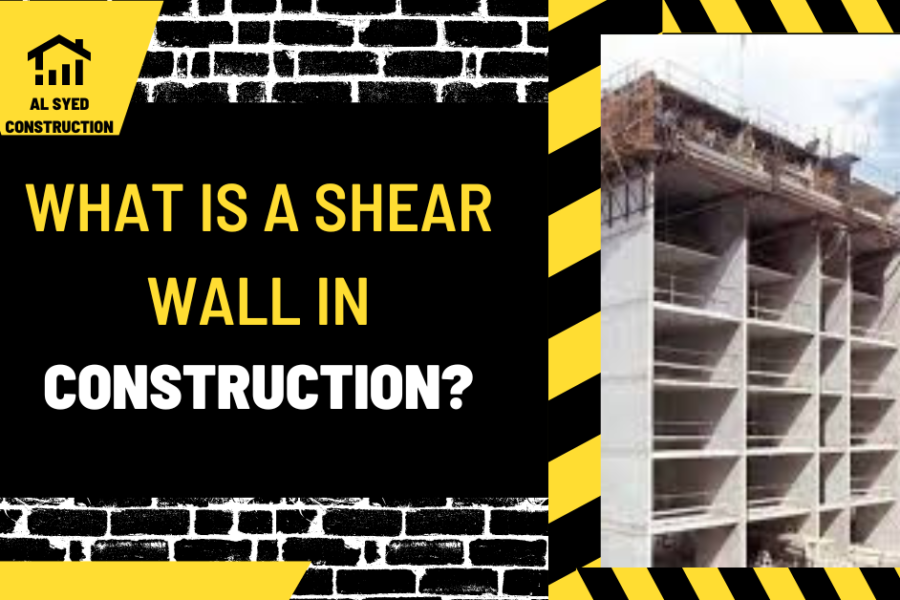What is a Shear Wall in Construction?
Table of Contents
Introduction
In the construction industry, the term “shear wall” refers to a crucial structural component designed to resist lateral forces, such as those generated by wind or earthquakes. This article delves into the concept of shear walls, their importance, types, and applications in construction.
Understanding Shear Walls
Definition
A shear wall is a vertical structural element that is designed to withstand lateral forces parallel to the plane of the wall. These walls are typically constructed of reinforced concrete, wood, or steel and are integrated into the building’s framing to provide additional strength and stability.
Purpose and Function
The primary function of a shear wall is to resist shear forces, which are horizontal forces that can cause a building to tilt or slide. By transferring these forces to the foundation, shear walls help maintain the structural integrity of a building during seismic events or high winds.
Types of Shear Walls
Reinforced Concrete Shear Walls
These are the most common type of shear walls and are constructed using reinforced concrete with steel reinforcement bars. They offer high strength and stiffness, making them suitable for tall buildings and structures in seismic zones.
Steel Shear Walls
Steel shear walls consist of steel plates attached to a steel framing system. They are lighter than concrete shear walls and can be constructed more quickly, making them a good option for retrofitting existing buildings.
Wood Shear Walls
Wood shear walls are constructed using plywood or oriented strand board (OSB) panels attached to a wooden frame. They are commonly used in residential construction and provide adequate strength for low to mid-rise buildings.
Design and Construction Considerations
Placement and Orientation
The placement and orientation of shear walls are critical for their effectiveness. They are typically located at the corners of buildings or along the perimeter to provide the best resistance to lateral forces.
Openings and Continuity
Shear walls need to be continuous from the foundation to the top of the structure to effectively transfer forces. Openings for doors and windows must be carefully designed to maintain the wall’s integrity and strength.
Building Codes and Standards
The design and construction of shear walls are governed by building codes and standards, which specify requirements for materials, dimensions, and reinforcement. Compliance with these codes ensures the safety and performance of the shear walls.
Advantages of Shear Walls
Increased Structural Stability
Shear walls provide additional stability to buildings, reducing the risk of collapse or damage during earthquakes or strong winds.
Enhanced Safety
By improving the building’s resistance to lateral forces, shear walls enhance the safety of occupants and reduce the likelihood of structural failure.
Efficient Use of Space
Shear walls can be incorporated into the architectural design of a building, allowing for efficient use of space without compromising structural integrity.
Conclusion
Shear walls are a vital component of modern construction, providing essential support and stability to buildings subjected to lateral forces. Understanding the types, design considerations, and advantages of shear walls is crucial for architects, engineers, and builders to ensure the safety and longevity of structures.
FAQs
- What is the difference between a shear wall and a load-bearing wall?
- A shear wall is designed specifically to resist lateral forces, such as those from earthquakes or wind, while a load-bearing wall supports the weight of the structure above it, including floors and the roof.
- Can shear walls be added to an existing building?
- Yes, shear walls can be added to existing buildings as part of a retrofitting process to improve their resistance to lateral forces. This is often done in regions prone to seismic activity or high winds.
- How are shear walls connected to the foundation?
- Shear walls are typically anchored to the foundation using steel reinforcement bars or anchor bolts that extend into the foundation, ensuring a strong connection that can transfer lateral forces effectively.
- Are there any limitations to using shear walls in construction?
- One limitation of shear walls is that they can restrict the placement of doors and windows, as openings in the walls need to be carefully designed to maintain structural integrity. Additionally, the construction of shear walls, especially concrete ones, can be time-consuming and labor-intensive.
- How do architects and engineers determine the number and location of shear walls in a building?
- The number and location of shear walls are determined based on the building’s design, size, and height, as well as the expected lateral forces it will face. Structural analysis and modeling are used to optimize the placement of shear walls for maximum effectiveness.




